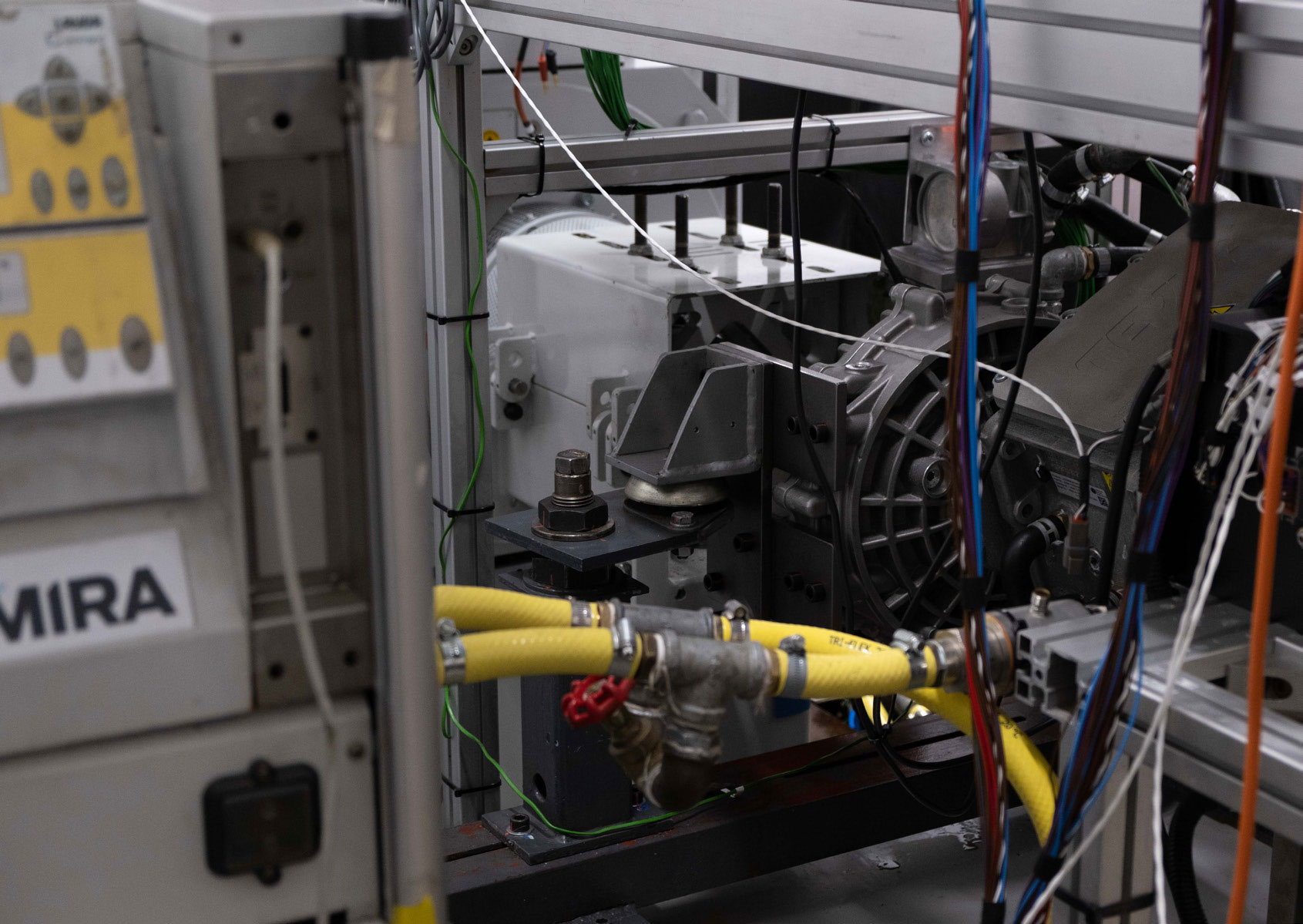Approach
The traditional approach to integrating a new powertrain would be to build a proof-of-concept vehicle. Waiting for such a prototype vehicle to be designed, built, made safe, and finally become available, is a time consuming and expensive exercise. De-bugging such a prototype on a proving ground or on a dyno then adds to this burden. HORIBA MIRA therefore proposed using an XiL approach in combination with physical testing.
A complete Tevva powertrain was assembled on the test bench at HORIBA MIRA’s Propulsion Test and Development Centre (PTDC) in Nuneaton, including a physical battery pack, thermal emulation and motor/invertor/gearbox linked to a 1e Dyno. This was then combined with HORIBA MIRA’s own vehicle model of the Tevva truck.
The combination of hardware and software in the loop provided a complete digital sandbox that could be used for shake-down testing, fault-finding, and initial calibration.
Physical testing was then carried out on the same site with the prototype vehicle. Any issues identified could then be recreated under laboratory or simulated conditions on the test rig, providing total repeatability.
Successes and benefits
By leveraging a highly efficient simulation-led engineering approach, HORIBA MIRA was able to slash the time and risk involved in Tevva’s new powertrain integration. Highlights of the project included:
- Implementing a whole-vehicle simulation model with a complete powertrain, including both hardware, software, and modelling elements, in the loop.
- Providing a totally controlled environment for repeatable testing and debugging.
- Flexibility to bring in additional engineering and test services as required.
- Fast-track approach, enabling the vehicle to be delivered in a heavily compressed time scale compared to traditional methods.
HORIBA MIRA has a vast array of engineering competencies in one place, which we can combine to make projects like this as low-risk as possible. There’s nowhere else in the world that gives access to the same spectrum of expertise in one place.
Ben Gale. Solution Leader for Automotive Energy Efficiency, HORIBA MIRA

